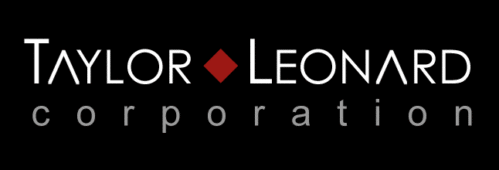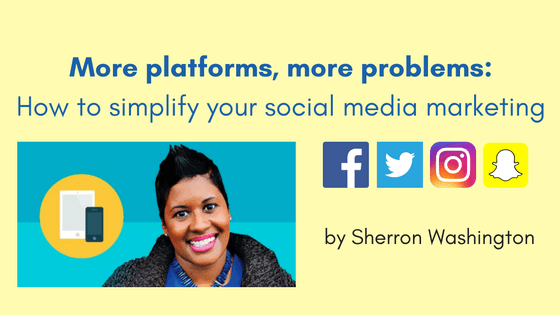How many social media networks do you belong to? Two? Four? More? Do you even know why? The truth is, the more social media platforms you join, the more complex it becomes to understand and manage them all with consistency.
This often leads to creating a presence in multiple areas that could damage or confuse your brand. Not every platform is created equal, nor is it suitable for every industry to have a presence on every platform. In fact, attempting to market in all places, at all times can lead to all kinds of social media anxiety and frustrations.
Sir Richard Branson, founder of Virgin Mobile, said it best: “Complexity is your enemy. Any fool can make something complicated. It is hard to keep things simple.” Social media is not any different — if you keep it simple, social media can help you develop and maintain a consistent brand presence. The key to marketing effectively lies in the ability to determine which environments you will best thrive in, which strategies work best in those environments, and how to implement those methods to alleviate aggravation and increase rewards.
Here are some familiar workplace analogies to help you assess how to provide the right message, to the right people, at the right time, on the most popular social platforms.
Facebook: The water cooler
I refer to Facebook as the water cooler because it is where acquaintances gather together and have small chats and talks. People usually take a break from their day to stop past the water cooler and engage in short discussions that range from shared personal experiences to professional updates. This environment is great for leveraging and nurturing new and existing relationships. Having daily interaction with your “water cooler” community keeps your brand relevant, relatable and memorable.
Strategies that are best used in this environment include creating posts that are engaging, encouraging or resourceful to gain exposure. Asking relevant and timely questions is one great way to obtain attention on Facebook. Questions foster communal inclusivity that encourages others to share their personal perspectives, making them feel essential and involved. “What is your position?”, “Who’s your top pick?” and “What is your experience?” are just a few examples to get the conversations started. Remember, the person with the most valuable information wins the most attention at the water cooler.
LinkedIn: The boardroom
Similar to a boardroom, LinkedIn is a place where professionals gather to connect with other professionals. In the boardroom, there is limited time for casual interactions, and professionals are conducting various business transactions, from employment offers to developing strategic partnerships. This environment is great for making connections with top-tier executives and establishing trustworthiness as an industry expert. Reaching out and connecting to skilled experts weekly in the boardroom is an excellent way to keep your finger on the pulse of your profession, while establishing your credibility.
Strategies that are best used in this environment include joining groups related to your industry, and sharing related links and information that demonstrates your knowledge and competence. This might include sharing information on industry best practices, new advancements or employment listings.
Twitter: The newsroom
Twitter is the place where people tune in to get quick information that is relevant and timely, and it’s a fast-paced environment. People usually flock here to get first-hand details of current happenings. The newsroom is a place of expiration, so the information that people seek and provide here is time-sensitive. It must be exciting and captivating enough to draw you in for more. This environment is great for gaining exposure and sharing information that showcases your industry and makes you a reliable resource. Posting at least three to five times a day helps demonstrate that you are in the know on current industry affairs.
Strategies that are best used in this environment include creating attention-getting “headlines” or tweets. Although you have 140 characters to make a statement, try to make do with less to get more Twitter users intrigued. When you tweet or retweet links from experts, use condensed headlines that pack a punch. “Authenticity Wins” and “Build Your Network, Improve Exposure” are just a few examples of how shorter headlines can capture and retain attention.
Of course there are hundreds of other social platforms out there, and yet hundreds more being created. Do you have to maintain a presence on all of them? The answer is no.
The key to simplifying social media marketing doesn’t lie in how many places you can be, but rather in selecting the right place to provide the right message, at the right time. To do this, you have to know and understand the environment, develop a strategy and execute tactics that can help create and maintain consistency in the presence of your brand. Only choose platforms that directly meet your marketing goals and target audiences, so that you can free up the rest of your time to be more productive.
More platforms, more problems: How to simplify your social media marketing was written by Sherron Washington for SmartCEO online magazine
 Sherron Washington is a CEO, author, marketing and communication expert, and professor. For more than a decade, she has imparted her wisdom and expertise in marketing, communications, branding and design. As CEO of the P3 Solution, a marketing and communication (marcomm) firm, Sherron has an outstanding record of achievement in creating innovative marketing and communication solutions for nonprofit organizations, associations, small businesses and entrepreneurs. She is also a business and communication professor at two local universities and is the author of Market Simple: The Blueprint I Wish I Had Before I Started A Business.
Sherron Washington is a CEO, author, marketing and communication expert, and professor. For more than a decade, she has imparted her wisdom and expertise in marketing, communications, branding and design. As CEO of the P3 Solution, a marketing and communication (marcomm) firm, Sherron has an outstanding record of achievement in creating innovative marketing and communication solutions for nonprofit organizations, associations, small businesses and entrepreneurs. She is also a business and communication professor at two local universities and is the author of Market Simple: The Blueprint I Wish I Had Before I Started A Business.

